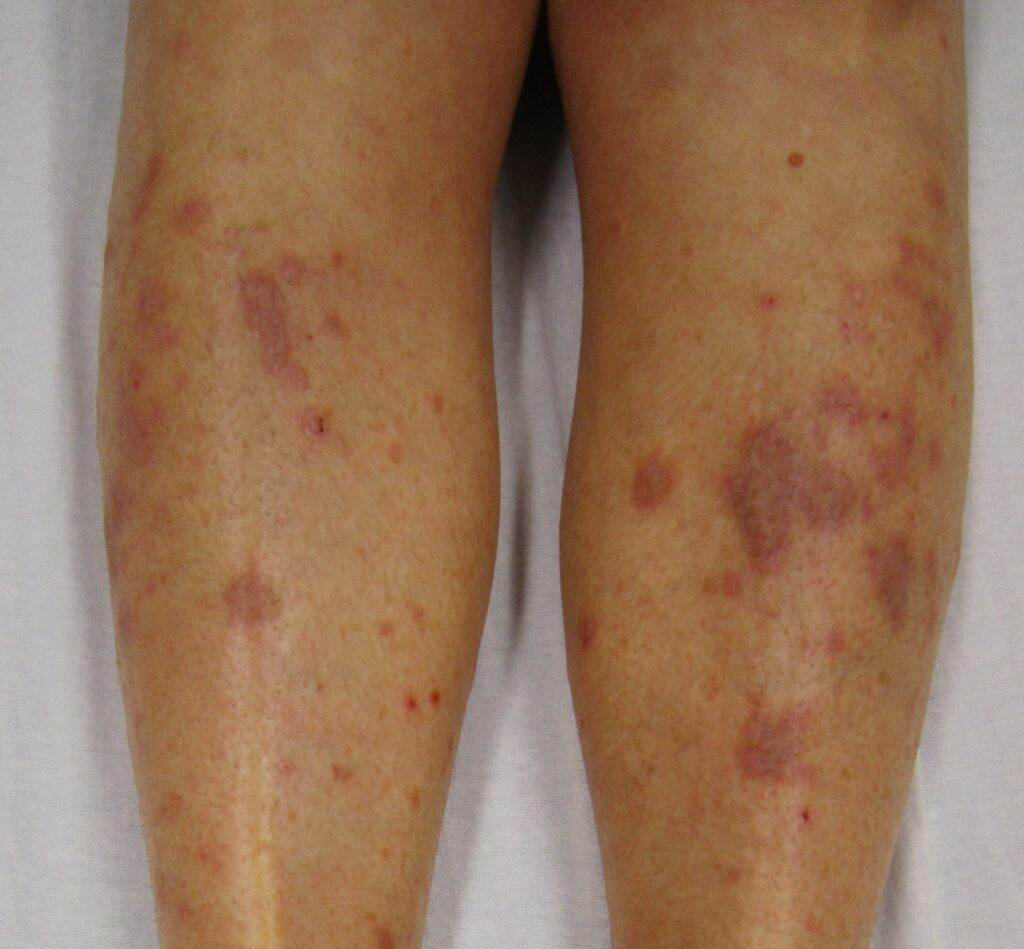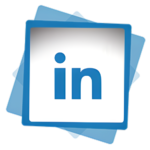If you or your loved one is suffering due to Lichen Planus, then you need our specially formulated Homeopathy treatment for Lichen Planus, tried and tested over the last 20 years to cure Lichen Planus in 18-20 months.
See our specialists at any Welling Clinic in India or order online instantly from the link above.
Treatment for Lichen Planus requires an experienced Homeopathic specialist who has needed skills to diagnose and has treated Lichen Planus completely. The Homeopathy treatment for Lichen Planus at Welling Clinics has been developed after exhaustive in-house research. Our clinics consult to more than 8400 patients of Lichen Planus globally, every year. You too can be benefitted from our expertise in treating Lichen Planus.
Cure Lichen Planus With Specially Formulated Homeopathy Treatment
Yes, Homeopathy can cure Lichen Planus permanently when managed by an experienced Homeopathy doctor. Our clinic doctors have presented paper on the effectiveness of Homeopathy treatment in cure of Lichen Planus.
- Our custom-made Homeopathy medicines for Lichen planus has helped 53,250 patients since the start of the clinic,
- The Homeopathy treatment for lichen planus has cured the most widespread painful lichen planus,
- The treatment is non-steroidal, with no creams and no oils. Just natural Homeopathy medicines custom-made for your for faster recovery,
- Usually, we see a cure in 12-18 months, rarely requiring 24 months.
- The fastest and the safest way to get cured of lichen planus symptoms permanently.
Call +91 9999064336 to book an appointment or to consult and order online. Consult our specialists today for a detailed evaluation and to start your customised Homeopathy medicines for Lichen Planus.
What is Lichen Planus?

It is an autoimmune condition in which there is a chronic recurrent rash that is due to inflammation.
Rash is characterized by small, flat topped,many sided bumps that can grow together into rough,scaly plaques on the skin. Lichen Planus is a long standing (chronic), recurring, non-allergic, non-infectious, non-contagious disease of the skin, of which the exact cause is not yet fully understood.
There may also be rash in the lining (mucous membrane) of mouth and vagina.
Females are more frequently affected as compared to male
Causes of Lichen Planus

It is considered to be an autoimmune disease in which the body’s protective cells attack the body’s own tissues mistaking them to be foreign in nature. Lichen Planus is found to be an immunologically mediated disease. The exact cause of Lichen Planus is not very clearly understood. Some triggers have been found which are clinically found to be responsible for Lichen Planus
Triggering factors are:
- Hepatitis C infection
- Hepatitis B vaccine
- Flu vaccine
- Certain pigments,chemicals and metals
- NSAIDs
Some drugs, such as those containing arsenic, bismuth, or gold, can produce an eruption that appears identical to lichen planus. Exposure to certain chemicals used in the development of color photographs can also produce a similar rash.
The long-term use of the drugs quinacrine or quinidine(Quinidine Gluconate, Quinidine Sulfate), which is used for malaria, certain microscopic organisms, and worms, may produce hypertrophic lichen planus of the lower legs and other skin and body-wide (systemic) disturbances.
Lichenoid eruptions can occur in graft-versus-host disease in people who have received bone marrow transplants. Tissue examination by a pathologist (biopsy) would be necessary distinguish lichenoid drug eruptions from classical lichen planus, which is not caused by medication. Of course, stopping the offending drug is associated with resolution of the eruption.
Symptoms of Lichen Planus
- Slow onset
- Purpulish or flat topped bumps,most often on the inner forearm,wrist or ankle but sometimes on external genitals.
- Rough,oily look of lesions
- Itching
- Bleeding may be present on scratching
- White spots or patches in the mouth (inside the cheeks or on the gums,lips or tongue),burning in mouth while eating spicy food.
- Painful oral or vaginal ulcers
- Hair loss and scalp discoloration
- Nail damage or loss
- Lichen planus affecting nails

It can affect nails in about 10% of cases. The majority of nail changes results from damage to the nail matrix or nail root, Commonly two or three fingernails or toenails are involved. Nail changes are;
- Longitudinal ridging and grooving
- Pitting
- Nail thinning
- Fragile
- Brown discolouration
- Depression of the nail plate
- Inflammation of proximal nail folds which becomes erythematous
- The skin of fingertips shows a honeycomb appearance due to multiple, small, punctuate and hyperkeratotic depressions.
Types of Lichen Planus
1.Lichen planus hypertrophicus-It manifests as large, itchy, voilaceous ,hyperkeratotic papules and plaques on the anterior surface of legs.
2.Lichen planus atrophicus-It presents as an annular area having atrophic,hyperigmented centre and active erythematous 1-2mm thick,raised border.usually seen on the face and dorsum of hands.
3.Lichen plano-pilaris– It manifests as itchy,violaceous papules present at the openings of hair follicles.It results in loss of hairs.Commonly seen on legs and arms.
4.Actinic lichen planus-In this annular grouped micropapular lesions are situated on the exposed parts of body like extensor sufaces of forearms and hands.They are aggravated on exposure to sunlight.
5.Linear lichen planus-In this lesions of are distributed in a linear fashion.
6.Bullous lichen planus-In this bullse are situated on the voilaceous base resembling lichen planus.
Diagnosis of Lichen Planus
1.Biopsy-During a punch biopsy test there is removal of small section of skin which is then examined under a microscope for cell patterns characterstics of lichen planus.
2.Hepatitis C test-to determine is patient suffering from Hepatitis C,a possible triggering for lichen planus.
3.Allergy test-To see any allergic reaction,which is a triggering factor for lichen planus.
Treatment Options For Lichen Planus
- -Corticosteroids such as Prednisone or Metronidazole
- -Retinoids
- -Nonsteroidal creams or ointments
- -Antihistamines
- -Phototherapy
Homeopathic Treatment For Lichen Planus
Homeopathic medicines for Lichen Planus act on the body at the level of immunity and restore the deviated function. They also help to control the symptoms of Lichen Planus without any side effects. Welling Homeopathy treatment for Lichen Planus is a tried and tested protocol to offer long term relief and permanent cure gradually.
The Homeopathic medicines for Lichen Planus have to be specific to every individual person. That is the reason a detailed history is required to customise the treatment for Lichen Planus. The Homeopathic treatment for Lichen Planus is chalked out after a detailed analysis and review of your past treatments for Lichen Planus and medicines for Lichen Planus taken by you.
With continued treatment, you will notice, reduction in the patches and symptoms like itching and burning.
Homeopathy Medicines for Lichen Planus
The common Homeopathy medicines for lichen planus, as prescribed for our specialist are Bell.,Bry.,Nux-v.,Puls.,Gels.,Iris.,Sang-can.,Spig. These are proven to help in our patients with Lichen Planus.
Is Homeopathy Effective For Lichen Planus?
Yes, it is effective in offering complete cure.
Specially formulated Homeopathy medicines, available exclusively at Welling Clinics can be very effective to cure Lichen Planus and prevent complications.
Meet our experts today to know more about the Lichen Planus treatment and how you too can live a pain-free life after Welling Homeopathy treatment for Lichen Planus
Click on the answers below for some common questions? Visit any Welling Clinic or chat with us for these questions and more.
What Causes Lichen Planus?
Lichen planus is a chronic inflammatory disease that causes the patient to develop itchy, swollen patches of skin that often crack and bleed. It can also cause painful lesions and blisters in and around the mouth, nose, genitals, and anus. The exact cause of lichen planus is unknown but it can be caused by an autoimmune reaction or physical factors such as infections, allergies, or trauma to the skin.
Lichen planus can affect people at any age but most commonly affects people between 10 and 40 years old. Men are more likely to get lichen planus than women although it is not known why this occurs.
How Long Does Lichen Planus Last?
Lichen planus is a chronic skin condition. It usually begins as small, purple patches on the skin. The patches may then turn into scaly, white marks that can be itchy or sore. The symptoms usually disappear over time and crusty white spots may remain.
Can Lichen Planus Be Cured?
Yes, Lichen Planus can be cured with CUREplus Homeopathy treatment from Welling Clinics.
Lichen Planus is a type of autoimmune disease that manifests as a rash or irritant. Lichen Planus is caused by an overactive immune system that leads to the production of antibodies and histamines. A person may not know they have Lichen Planus but it can be diagnosed by looking for the physical symptoms and with a biopsy.
Some people who have Lichen Planus experience itchy or burning skin anywhere on the body which is often worse at night. Some people also experience fatigue, weight loss, hair loss, and headaches as well as many other symptoms.
Treatment for lichen planus often involves steroids like prednisone which will usually bring the rash to a head within 12 weeks. Other treatment includes topical steroids, antihistamines and psoralen which can come in contact with UV light to block out the bad cells. Treatment is also available using the drug Methotrexate but this comes with many risks..
More than half of all people who have Lichen Planus will experience a remission within 2 years of diagnosis.
What Does Lichen Planus Look Like?
Lichen planus is a skin disorder in which there is a rash on the skin amongst other symptoms. It acts as a result of an inflammation of the skin caused by a hypersensitivity. The most common symptom in lichen planus is a rash in the form of a linear or acral distribution, with long symmetrical lesions in a polygonal pattern that progresses to form plaques and then atrophic patches. The rash is mostly flat with thin, shiny atrophic-appearing lesions. The lesions can appear anywhere on the body; however, mucous membranes are rarely affected.
The symptoms of lichen planus may be different for each person. Some may suffer only a few symptoms while others could have all of them. The following is a list of the more common symptoms of lichen planus:
-Intense itching that may occur mostly at night or after taking a shower
-Crops of fluid-filled blisters that are very itchy. These often develop on the soles of the feet, palms of hands, and top surfaces of the fingers and toes. The blisters typically break open, crust over, and then disappear.
-Itchy patches of blisters that are pink or red in color on the genitals, including the penis or vulva
-Reddish rash on the sides of the neck
-Raised bumps with a white center may also develop on areas where lichen planus is present
How To Treat Lichen Planus Naturally
In the unfortunate event that you have been diagnosed with lichen planus, there are a few natural remedies that you should be aware of. These treatments will ease the discomfort and itching while also reducing the frequency of outbreaks.
First, take a shower and rinse off. This can be a complicated process for anyone who has not had any form of chronic infection in the past. You want to avoid putting any soap or shampoo on your body, but to get rid of any skin cells that may be clinging to your skin from external sources.
In order to get a deeper clean, use water with a squirt of bleach – just enough to cover your skin without irritating it. Co-washing is another option if you have been diagnosed with lichen planus on sensitive areas of your body. This is done by placing warm water in a spray bottle and coating the affected skin for several minutes before rinsing it off, leaving the skin clean.
If you are not fond of this process, apply some apple cider vinegar (ACV) to the affected area after washing, but before drying completely . Dry the area completely after you are done with your treatment.
Second, wear loose clothing to give the affected areas an opportunity to breathe. If your lichen planus is on your genitals or anus, do not wear underwear for at least three days to reduce irritation of these sensitive tissues during treatment. It is also recommended that you avoid wearing tight clothes, such as skinny jeans or spandex, which can trap heat and moisture against your skin.
If you cannot avoid wearing clothing that will put pressure on the affected areas of your skin, place cotton padding between yourself and the offending articles to reduce irritation – especially if the irritation is caused by seams in clothing.
Third, keep lichen planus moisturized when it is dry. This prevents your skin from becoming dry, which can potentially cause an outbreak. You want to avoid using any soap or shampoo on the affected areas but you can use a simple moisturizer to keep them hydrated and supple. The goal of this treatment is not to affect the pH levels or flora of your skin . You can use lukewarm water or an aloe vera/cucumber juice mixture to keep the skin hydrated.
Fourth, take care of your skin by avoiding scratching . A good way to reduce itching is to apply a cold compress for several minutes every few hours. Keep the affected area clean and dry, but avoid using any harsh chemicals. Do not apply any type of moisturizer that contains alcohol or fragrance, since these can irritate your skin and make symptoms worse.
Fifth, reduce the frequency of lesions by taking herbs that strengthen the immune system. Lichen planus is an autoimmune disease and an overload on your system will only produce more symptoms and decrease quality of life. Licorice root, olive leaf extract , and echinacea are powerful ways to give your body the assistance it needs in processing lichen planus.
Sixth, get enough sleep . You can naturally help yourself by using cognitive behavioral therapy (CBT) to reduce stress . Stress has an impact on every part of the body and can cause you to feel fatigued even when you have had a good night’s sleep. In conjunction with CBT, use aromatherapy or meditation to clear your mind and boost moods.
Finally, avoid smoking cigarettes – this will only make your lichen planus worse. The chemicals from tobacco can irritate the skin and reduce airflow to the lungs, which reduces your body’s ability to heal itself. Smoking can also cause an increase in lichen planus outbreaks.
Does Lichen Planus Spread?
Lichen planus can be found on any part of the skin. The rash is typically itchy and once you scratch the rash, it becomes more inflamed. It can also spread to other parts of the body that are not covered by skin. When it spreads to other parts of the body, it is known as secondary lichen planus. Symptoms of secondary lichen planus can be similar to symptoms of primary lichen planus; however, they are not identical. The symptoms may differ depending on which part of the body is affected.
Symptoms that affect areas other than your skin are called “secondary lichen planus.”
Does Lichen Planus Go Away?
Lichen Planus is an inflammatory condition of the skin that may come back. Lichen Planus can last anywhere from months to years, but it has been found that the symptoms usually disappear after about 18 months. It has been found that those who have been diagnosed with Lichen Planus, only about 1% of them usually end up developing cancer. Treatment for lichen planus depends on the severity and location of the rashes.
How To Stop Lichen Planus From Spreading?
Lichen planus is a skin condition that is usually triggered by medications, genetics, or external factors like parasites or fungi. It may also be caused due to an improper immune response in the body.
There are various potential treatments available for lichen planus. Some of them include: CUREPlus Homeopathy treatment, Triamcinolone acetonide ointment, corticosteroids ointment, and oral steroids such as prednisone. Calcineurin inhibitor is also used for treatment. Other treatments include: antifungals, phototherapy, and intravenous immunoglobulin (IVIG).
How To Remove Lichen Planus Marks?
Lichen planus is a skin condition that can cause white or brown marks on your skin. These marks can be small and circular or long and thin. The circles or lines that make up the marks can have a scaly texture, like tree bark.
To Remove Lichen Planus Marks , You Need To Understand The Causes.
Though The cause of lichen planus is not known. It may be caused by an allergy to something in the environment. This could include soaps, detergents, clothing, pet dander, mites or other substances you come into contact with every day.
Lichen Planus is a skin problem that causes white or brown spots on your skin. These marks can be small and circular or long and thin. The circles or lines that make up the marks can have a scaly texture, like a tree bark.
Having one of these patches of tissue growing on your body is not only ugly, but painful. Lichen planus marks can grow red and itchy, causing a lot of discomfort to the patient.
Is Lichen Planus Hereditary?
Lichen planus is not hereditary because it is caused by a variety of factors. Examples of the causes of lichen planus include autoimmune response, emotional stress, and allergies. Lichen planus causes are often difficult to determine but there are some preventative measures that can be taken when trying to reduce the chance of developing lichen planus. These include avoiding spicy foods and using sunscreen on exposed skin surfaces.
What Is Lichen Planus Oral?
Oral lichen planus can be classified as a chronic leukoplakia that is almost always triggered by some event within the body. There are two general types of oral lichen planus – endemic and acquired. Endemic (primarily found in Africa, Asia, and Central America) occurs at an equal rate between sexes but has no known cause; a variety of allergens may play a role in its development.
In contrast, acquired oral lichen planus is most common among older patients and typically shows up with irritation on the tongue or inside cheek tissue. It sometimes causes white or yellow lesions to form in any areas where dentures rub against the mouth lining which is why it affects older inhabitants more than others. Oral lichen planus can also occur as a result of an autoimmune disorder.
When the body perceives something foreign to the immune system, it responds by creating antibodies called immunoglobulins or IgE that bind to tissues and cause an overproduction of collagen in an effort to protect against the potential danger. Oral lichen planus is one such example.
Is Lichen Planus A Fungus?
Lichen planus is not a fungus. It is more likely to be an autoimmune disorder. A number of people with lichen planus have noted an unusual reaction when they eat gluten products, so it’s likely that there is some kind of sensitivity to some substance in foods.
Can Lichen Planus Pigmentosus Be Cured?
Lichen planus pigmentosus is a skin problem that mostly affects people of African and Asian descent.
It can be cured, but like most other autoimmune diseases it may take years to get rid of the problem and sometimes doctors do not know why it gets better. There are no really effective treatments for lichen planus pigmentosus. Steroid creams are usually used, which only control the inflammation and don’t cure the disease. Steroids can also have side effects, usually atrophy of the skin tissue, which means that it becomes thin and weak.
Welling Homeopathy treatment can treat lichen planus pigmentosus and cure it within 12-18 months.
Is Lichen Planus Dangerous?
Lichen Planus is an autoimmune disorder that can cause prolonged itching, rashes, blistering and lesions. Lichen Planus may worsen in response to sun exposure and the condition’s symptoms may vary.
Lichen Planus is not dangerous but it can be very uncomfortable and frustrating if you have to deal with it for a long time. Seek medical treatment as soon as possible if you experience any of the symptoms listed above and don’t suffer from any other diseases or illnesses that could cause similar symptoms.
What Is Lichen Planus Of The Scalp?
Lichen planus is a skin condition found on the scalp and it doesn’t have any symptoms. It can be very frustrating to have this disorder because people often mistake it for dandruff or other scalp conditions. Lichen planopilaris, on the other hand, causes many symptoms. One of the most notable is that it can cause hair loss as well as permanent scarring. Before you begin to panic about losing your hair, know that it’s a very slow process and only happens to less than 10 % of patients.
What Causes Lichen Planopilaris?
There are two main kinds of lichen planus also known as Lichen planopilaris; they’re both caused by autoimmune diseases such as Rheumatoid arthritis and Systemic lupus erythematous but neither disease has been proven to be directly connected with Lichen Planum. However, there is a strong link between lichen planopilaris and lichen planus. Both diseases target the skin, joints and mucous membranes of the eyes, mouth, lungs and gastrointestinal tract.
While there is no scientific evidence to suggest that scalp inflammation leads to hair loss most doctors believe that it could be caused by a severe allergic reaction between the scalp’s outermost layer called the stratum corneum or something in your diet causing an imbalance in steroid hormones which can cause permanent scarring leading to follicle death. This causes bald patches that can often grow back wavy or in different colours (depending on your location).
Can Lichen Planus Cause Cancer?
It has been found that lichens are more common in people with lung cancer. However, it is unclear if lichens can cause cancer. Clinical studies have shown that people with lichen planus are more likely to develop lung cancer. Some of these studies have also found an increased risk of developing larynx, esophagus, cervix, urinary bladder and prostate cancers in groups with this condition. It has been estimated that about 25 percent of the population who are affected by lichen planus will develop cancer.
The exact reason for this increased risk is unknown. It may be due to the chronic inflammation or irritation associated with lichen planus. These factors could damage the DNA of cells and cause problems in cell growth and death, which can lead to cancer development. The glandular cells most affected by Lichen Planus also have a role in the development of some cancers, but their role is not well understood.
It is difficult to know if Lichen Planus can cause cancer, because other factors may also be involved, such as genetics and environment. However, based on current available information it appears that there could be an increased risk of developing certain kinds of cancer if you have this condition.
Lichen Planus is a non-cancerous (benign) skin disease that causes itching, flaking and crusting of the skin due to an allergic reaction. It can affect both men and women at any age, but it usually starts in adults aged 30 – 60 years old. The cause of Lichen Planus is unknown.
Is Lichen Planus Cancer?
Lichen Planus is not cancer! Lichen Planus is broken down into four different types: oral lichen planus, genital lichen planus, generalized lichen planus and the extracutaneous lichen planus. The most common type of Lichen Planus is called Oral Lichen Planus. Oral Lichen Planuses are typically found on the mouth and inside of the mouth, but can develop anywhere in the mouth such as on the gums or tongue.
Oral Lichen Planuses occur more frequently in people that have a history of autoimmune diseases such as lupus or scleroderma (a chronic disease that affects connective tissues and results in hardening of skin and tissue). Oral Lichen Planuses are also associated with other conditions such as human papilloma virus (HPV), Epstein-Barr virus, or HIV.
The various types of Lichen Planus are not considered to be cancerous lesions. These lesions need to be seen by a medical professional to determine the appropriate type of treatment needed for each individual case .
Lichen Planus is a skin condition that results in an itchy, burning rash. It most commonly affects older adults and usually appears on the wrists, forearms, lower legs, backs of hands or over areas of skin that have experienced repeated irritation. Lichen Planus is associated with other autoimmune diseases such as lupus erythematosus, thyroid disease and rheumatoid arthritis.
Lichen Planus is an autoimmune disorder that causes the immune system to attack healthy skin cells by mistake. Lichen Planus is a chronic disease meaning it can reoccur. Treatment options for Lichen Planus can include medications, laser treatments or surgery in severe cases of Lichen Planus.
Lichen Planus is a skin disorder that most commonly appears on the forearms and lower legs but can show up anywhere on the body except for mucous membranes such as those found in the mouth, nose and genitals.
How Is Oral Lichen Planus Diagnosis?
If you want allopathy treatment, oral Lichen Planus is usually done by a dentist. The dentist will also decide on the treatment that is going to be followed for treating the disorder.
Oral Lichen Planus is a condition that appears as an eruption on the mouth. It makes the mouth look white and sometimes reddish in color. The signs of Oral Lichen Planus usually appear symmetrically, meaning both sides of your mouth will look alike. The inside lining of the cheek is known as the mucosa. The Oral Lichen Planus condition affects this tissue, but sometimes it can affect other areas of the mouth also like the tongue and lips.
The dentist will check for any white patches or anything resembling a leukoplakia (white spots) on your mouth lining during diagnosis. After doing an examination they may take some biopsies. The tissue is then sent to a lab for examination under a microscope to identify the exact condition.
Is Lichen Planus Related To Psoriasis
Psoriasis is a skin condition that causes plaques to form on the skin. These plaques are usually red and scaly in appearance. It is thought to be a genetic disease that can be triggered by environmental factors. Psoriasis has a higher prevalence in people who have the atopic syndrome, an immune system disorder characterized by asthma, eczema, or hay fever
Lichen planus is a chronic skin inflammatory disease that affects the topmost layers of the skin. Lichen planus also typically causes itching and it is most common among people ages 40 to 70 years old. This disease can also cause pain, but it does not usually cause scaly patches like psoriasis does.
What Is The Fastest Way To Cure Lichen Planus?
Its takes 18 months to cure Lichen Planus completely with put Homeopathy treatment for Lichen Planus.
In conventional treatment, Lichen planus has no cure.
What Foods Should I Avoid With Lichen Planus?
According to the Cleveland Clinic, lichen planus is a condition that usually affects the outer layer of the skin. When you have lichen planus, it can cause severe itching and welts. And a common treatment for lichen planus is a topical steroid cream or oral medication.
The most important thing to know about food with regards to lichen planus is that people who have this condition should avoid eating foods high in salicylates. Salicylates are found in foods such as oranges, peaches, tomatoes, plums, carrots and strawberries. They can also be found in beverages such as ginger ale and apple juice. People who have lichen planus should also avoid having large quantities of caffeine and red wine.
Here are some other foods that should be avoided by people with this condition: spices such as cinnamon, curry and cayenne; mint such as peppermint and spearmint; artificial food colourings; shellfish; dairy products such as milk, cheese and yogurt.
People who have lichen planus should eat a healthy, well-balanced diet so that their body will have the vitamins and nutrients it needs to heal properly.
Lichen planus is treated with topical steroid creams or oral medication. It is also important for people with this condition to avoid eating foods high in salicylates and to avoid caffeine and red wine.
What Foods Are Good For Lichen Planus?
If you have Lichen Planus, you probably already know that certain foods can irritate the itch and rash. Acidic fruits and vegetables such as citrus, tomatoes, carrots, potatoes, grapefruit, pineapples, lemons, limes and strawberries are common offenders. Dairy products such as milk and cheese may also aggravate the condition.








